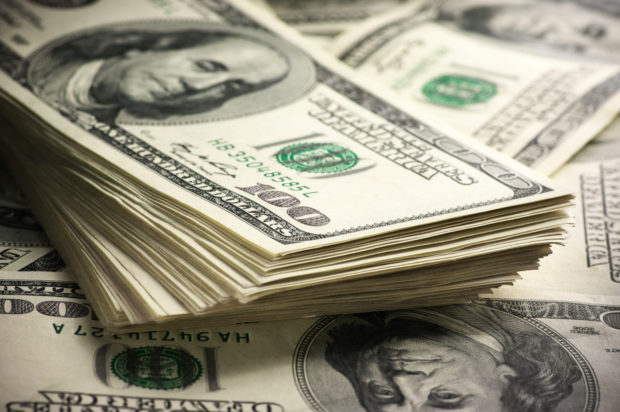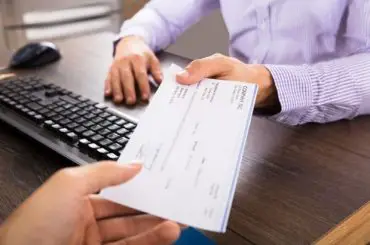Information presented on this web page is intended for informational and educational purposes only and is not meant to be taken as legal, financial, investment or tax advice. We do not accept any responsibility for any trading or investment related losses. Please review our disclaimer on before taking action based upon anything you read or see.
How do thieves cash stolen checks? This is a question that many people nowadays are asking. Despite the growing popularity of online banking, check theft continues to be a significant issue for bank customers. Even today, it’s critical to understand how thieves cash stolen checks and how to protect one best. All of these points have been highlighted in the sections below.
Of course, you’re aware of the function of a check. A written, dated, and signed check instructs the bank to give money to an individual carrying it. When thieves have a stolen check in their possession, they are usually cautious because most institutions and stores are careful when paying out. You’ve probably seen a stack of unwashed checks, either from businesses or from individuals.
Even though the checks are current, the majority of people forget them. Because many of these checks are from large corporations, no red flags are triggered if they get paid. When processing such checks, however, thieves usually make sure they don’t come in their name.
Requirements for Cashing a Stolen Check by Thieves

Thieves usually put several components in place before cashing a stolen check. Otherwise, they risk compromising their identity, being detected, and getting criminal charges.
The following are the prerequisites for a thief to cash a stolen check:
False identification
Thieves will need a false Identity with the account owner’s name on it. An incorrect driver’s license or any other acceptable form of identification can stand as a fake ID.
The location on the ID is typically the same as the address of the account owner. Of course, some banks and checking establishments need two forms of identification to verify the individual’s identity checking out.
Fraudulent signature
It is considerably easier for thieves to cash a stolen check if it has already got a signature. Otherwise, they’ll have to falsify the signature. They will quickly get away with the crime if they use this method.
Avoiding the use of cameras
Thieves do tend to avoid security cameras. To dissuade the attendants from getting suspicious, they wear something equivalent to a hoody but not completely covered. Of course, security footage will aid the police in tracking them out and apprehending them. Being apprehended signifies “jail,” and they wouldn’t want to go there.
Washed check
Thieves frequently target mailboxes if they don’t already have a stolen check to cash. Check washing is the practice of targeting mailboxes. Criminals usually look for mailboxes with flags up to collect the checks.
How do Thieves Cash Stolen Checks?

Even if the illicit transaction doesn’t involve the issuing bank, thieves can redeem a stolen check and get away with it. Cashing a stolen check is, fortunately, illegal and punished, as you may already know. As a result, here’s an example of how thieves do it:
Cashier’s bank
Fraudsters can lodge a check in the bank of their intended victim. After a few weeks, they can withdraw the money at a pop check or a local mom check processing establishment. The targets are usually accounting owners who rarely scrutinize their banking activity, and the funds must also be little to succeed effectively.
The account owner will soon receive duplicates of the stolen check that the criminals cashed. The first verification maybe their cell phone uploaded image, and the copy, which is the money they received at a local check-cashing business, must be taped together.
A bank account with a positive balance must also get linkage to the check. People who have good account balances rarely go to cash checking stores to cash their checks.
So, as you can see, processing a stolen check at a check-cashing store is straightforward for thieves, mainly if the check contains the name of their intended victim.
Thieves who have ties to an evil checking station that cashes a check are already multimillionaires.
Getting a check in the mail
When it comes to getting away with a stolen check, criminals usually go for a cash check. The written check will be payable in cash if they get a stolen cash check.
The check will not have a track to their local bank, and they will be able to get away with it. However, they are frequently wary about being photographed by security cameras or having their fingerprints taken.
Taking advantage of the bank
If an account owner signs a check in their name and authorizes it, he can recover the money stolen from the fraudulent check. Checks are often approved by endorsing the back or putting the deposit account number.
How do crooks defraud the bank to pay a stolen check? They accomplish this by presenting a forged ID. The bank is accountable for not validating the ID when the account holder realizes that the check gets payment.
These crooks often keep the cashable amount low to avoid the bank cashier becoming suspicious. Some have a rapport with the cashier, yet finding a cashier ready to participate in this crime is challenging.
Furthermore, banks are wary of paying without first validating identities, which typically entails obtaining fingerprints. This is frequently a free ticket to enormous cashing of stolen checks for crooks who have a clever means of disguising their biological fingerprint.
Forgery of signatures
We have earlier explained this method. However, thieves can cash a stolen check if the signature is false. They accomplish this by faking the user’s signature on the stolen check’s endorsement line. Finally, they write their names beneath it, allowing them to cash the check and go away.
To avoid being captured while cashing a stolen check, criminals avoid processing all checks at almost once. Though the approach is acceptable for lawfully cash checks, it is a warning signal for most criminals.
Getting a clueless adolescent
Thieves who aren’t brave enough to visit a checkpoint frequently entrust the task of cashing the stolen check to a group of inexperienced teens. They also persuade the adolescents to cash the check using their bank account, promising them at least 20% of the proceeds. When a teen is guilty, they may not be punished at all, depending on their age.
Online payment
With account information and routing, criminals can cash intercepted checks online. They may not even require the name of the account owner. Then they go online and use the check information from the virtual check to make a purchase.
Some businesses accept virtual checks. The id number, bank details, and name of the account holder are usually required. They may, however, request the address.
Meanwhile, it’s not just sleazy businesses that let you purchase items online using compromised check information. Amazon and other well-known retailers accept digital debits from current accounts. To get the complete orders, they only need the account number and routing information.
When it comes to tuition payments, certain universities, such as Ohio State, accept electronic checking. Electronic checks are now accepted by utility and cell phones, making it easier to redeem a stolen check. Thieves do not require a signature when transacting online with a stolen check.
Frequently Asked Questions
What should I do if a stolen check gets paid out?
When someone cashed your stolen check t to you, you’ll have to alert the check’s originator as well as the cops.
What happens if a stolen check gets payment?
The short answer is that anyone who cashes a stolen check gets payment in 2 – 3 business days. However, if the account holder discovers the fraud and reports it to the bank, the transaction will get a reversal. Nevertheless, before the bank account holder receives their funds, the bank must investigate the transaction.
What can I do to keep thieves from stealing my check?
Use the following suggestions to keep thieves from stealing your check:
- Confirm to see if your bank has endorsed your checks.
- Integrate anti-counterfeiting and anti-tampering security mechanisms.
- Checks, money orders, financial records, and canceled checks should be kept in a safe and secure location.
- Never keep your checkbook unattended in your car or out in public.
Who is liable for a stolen cash check?
A bank stolen check can sometimes get traced back to the bank, especially if the bank failed to verify the ID before making payments properly. When a stolen check gets payment, however, no federal statute explicitly holds banks liable. Depending on the circumstances surrounding the criminal check cashing, a banking location could also be held accountable.
Do banks contact you to verify your checks?
Yes. Banks frequently call their customers to verify a check within a few minutes through the phone.
Is it possible for someone to sue you for redeeming their check?
Yes. An account owner can sue you if you redeem their check without their consent or in an unauthorized manner. If it involves signature and name forging, people have a large case to answer, and you could face jail time.
Conclusion
In conclusion, check theft is one of the most severe issues confronting today’s industries and financial firms. To prevent this, the highlight of how thieves cash stolen checks above will aid you immensely.




